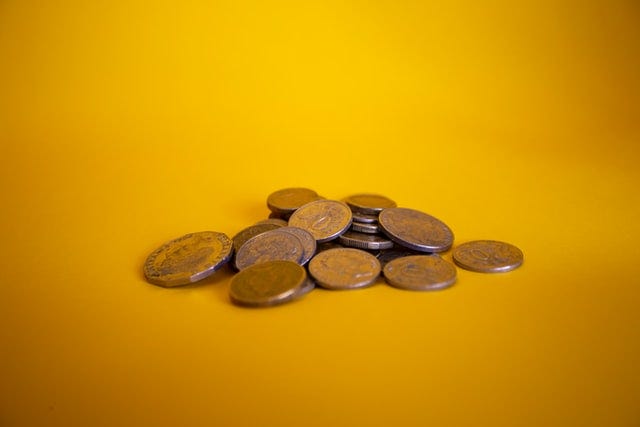Classic Puzzle: Identify the Counterfeit Coin Among 12 Coins
Written on
Chapter 1: The Counterfeit Coin Challenge
Imagine you have twelve coins that appear identical, but one of them is a counterfeit, which may be either heavier or lighter than the rest. Your task is to identify the counterfeit coin using a balance scale, and you can only weigh three times. Are you ready to tackle this challenge? If not, keep reading!

Photo by Miles Burke on Unsplash
To solve this puzzle, we will categorize the coins into three groups of four, labeled A, B, and C. We will compare the total weight of group A against group B using the balance scale.
Section 1.1: Scenario Analysis
Scenario 1: A and B Balance Equally
If both groups A and B weigh the same, the counterfeit coin must be in group C. To identify it, weigh three coins from group C against three known genuine coins from A or B.
- If the scale is balanced, the coin from group C that wasn't weighed is the counterfeit. You can then check if it is heavier or lighter by comparing it to a coin from A or B.
- If the scale tips, one of the three weighed coins from C is the counterfeit, revealing whether it is heavier or lighter. You can weigh any two of these coins; if they balance, the third coin is the counterfeit. If one side dips, that indicates the counterfeit.
Scenario 2: A and B Do Not Balance
If A is heavier than B, then the counterfeit is either in A (heavier) or B (lighter). Let's form two new groups, X and Y:
- Group X consists of one coin from A and three from B.
- Group Y contains three coins from C and one from B.
We will now compare the weights of groups X and Y:
Sub-scenario 2a: If X and Y Balance
This indicates that the counterfeit is among the three coins from A not included in either group, and it must be heavier. We can check two of these coins; if they balance, the remaining coin is the counterfeit. If one side is heavier, that coin is the counterfeit.
Sub-scenario 2b: If X is Heavier than Y
The counterfeit could either be the coin from A in X or the one from B in Y. Weigh the coin from A in X against any coin from C. If they balance, the B coin in Y is the counterfeit and lighter. If not, the A coin in X is heavier and thus the counterfeit.
Sub-scenario 2c: If Y is Heavier than X
This suggests the counterfeit is one of the three B coins in X and is lighter. Test two of those coins; if they balance, the remaining coin is the counterfeit. If one side dips, it indicates which one is lighter.
Through this method, we successfully utilized the scale just three times!
Exercise:
Consider a generalization of this puzzle. For a given number of identical coins, N, determine the minimum number of weighings, W, needed to identify the counterfeit coin and whether it is heavier or lighter. For N=12, we find W=3.
Other Variations:
This timeless puzzle has many variations; sometimes marbles replace the coins. Notably, Google reportedly uses a version of this problem in interviews, asking candidates to identify the heavier or lighter individual among twelve identical-looking people using a seesaw.

Chapter 2: Video Explanations
The first video titled "Counterfeit Coins and Balanced Ternary #SoME3" provides a comprehensive overview of solving counterfeit coin puzzles.
The second video, "Counterfeit Among 8 Coins || Classic Puzzle #02," further explores strategies for identifying counterfeit coins with practical examples.